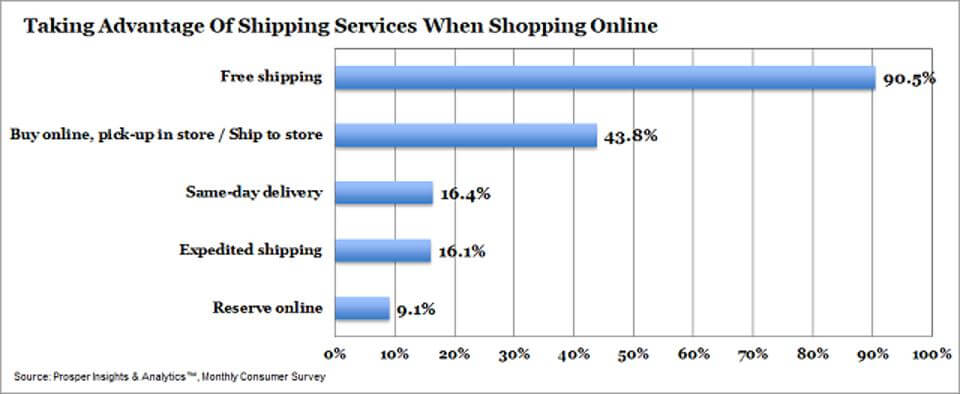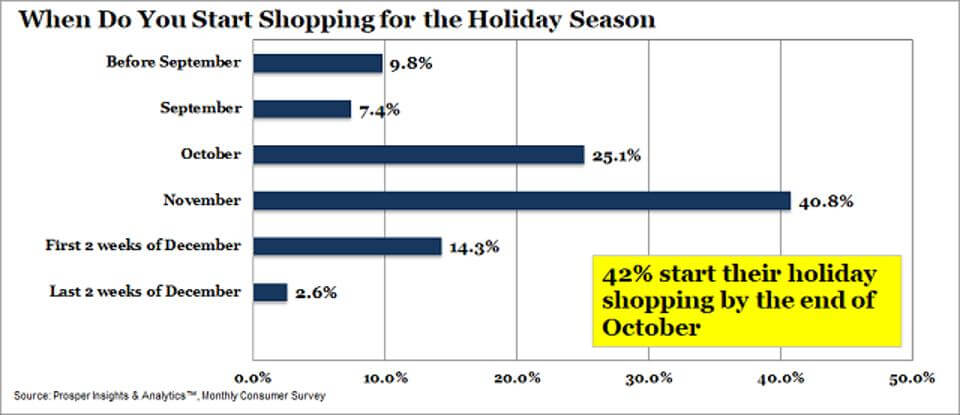
What America’s 2020 Holiday Shopping Projections Say About The Future Of Customer Loyalty
With Black Friday just around the corner, this holiday season is projected to be unlike any other, especially with announcements from major retailers like Walmart and Target to close their stores on Thanksgiving Day. Brands can no longer depend on the rush of holiday foot traffic to keep sales momentum, and with the explosion of e-commerce creating new methods of shopping, retailers need to rethink how they are reaching their customers during the busiest season of the year.

To explore how the pandemic has impacted retailers and shifted consumer buying behaviors this holiday season, I spoke with Paulo Silva, Senior Vice President of Client Solutions at Alorica, a leading global customer experience solutions provider that supports more than 2 billion customer interactions per year. Servicing several of the world’s largest retailers and many other Fortune 500 companies, Alorica offers a suite of world-class customer experience services and technology, including customer relationship management tools and back office support.
Leveraging Silva’s 28 years of experience in enhancing the customer experience (CX) and brand loyalty including 15+ years as a client and provider within the retail space, we analyzed new data from Prosper Insights & Analytics Monthly Consumer Survey. The survey saw responses from over 7,000 US consumers on a broad selection of spending intentions and retail behaviors with additional predictions and insights on Covid-19’s impact on holiday shopping habits.
Gary Drenik: How has the pandemic impacted the retail industry as we head into the 2020 holiday season?
Paulo Silva: Holiday shopping has already drastically changed for retailers in comparison to previous years. Based on Prosper Insights & Analytics’ Monthly Consumer Survey, the vast majority admitted they could be convinced to purchase gifts earlier than they typically do, attributing this to several factors including avoiding crowds, mitigating the stress of last-minute shopping, and incentives like seasonal deals. The survey found that consumers are beginning their holiday shopping earlier than ever before, with 42% stating that they planned to start their holiday shopping by the end of October, and as of early November, over half of holiday shoppers have already started making purchases. As a result, the typical timeline for retailers to prepare for the influx of holiday sales has pivoted, with holiday inventory and promotions kicking off even earlier than usual. This accelerated timeline has made retailers allocate more resources to prepare for the holiday rush earlier and extend the season longer.
Because it will be less about camping out and waiting in long lines to get through the mad rush inside stores on Black Friday and during the holidays, consumers will also expect better CX. They’re no longer at the mercy of these major in-store deals on specific days, so retailers need to work harder for customer loyalty. To ensure loyalty and affinity toward a retail brand—while differentiating themselves from the competition—better customer service is necessary. Consumers need personalized experiences now more than ever before, and brands that can successfully implement customization and optionality within their CX strategies will come out on top. It's essential for retailers to incorporate a human element into their CX approach as well. This includes incorporating empathy and tailored recommendations that consumers would typically experience in-store into every touchpoint across the customer journey. One example of this is loyalty programs that make customers feel special and provide the white glove, concierge-type services that they are seeking.
Drenik: It’s no surprise that retailers are adjusting their operations to create a safe shopping experience during this global health crisis, but how have consumers' shopping habits changed amid Covid-19?
Silva: With holiday sales starting earlier and lasting longer, consumers are becoming more flexible with their holiday shopping plans than in previous years. The pandemic has given customers more time to really think through their holiday shopping list and evaluate their purchasing options. Prosper’s November data found that on average, holiday shoppers have completed only 26 percent of their shopping so far. With many consumers still sheltering in place and reevaluating their travel plans for the holidays, customers have more time to focus on holiday shopping, in turn making the retail landscape much more competitive than previous years.
According to Prosper Insights & Analytics’ Monthly Consumer Survey, thousands of people plan on spending more or about the same on gifts for their families, friends, coworkers, etc. this season, which shows holiday shopping is still top of mind for many customers despite the down-turning economy. Feedback from the survey also found that spending on holiday decorations (tree, lights, candles, decor) is expected to increase from $87.96 last year to $90.75 this year, with spending on greeting cards and postage projected to follow suit with a $2.93 increase for 2020. This data comes as no surprise, knowing that many people have been quarantining for most of the year. With less individuals partaking in usual festivities or traveling to see family, many are focused on creating the holiday experience at home and staying connected with loved ones from afar. With this change in consumer holiday experiences, brands and CX providers need to pivot their focus to a more targeted approach that caters to this shift in mindset and purchasing habits in order to allocate resources accordingly.
Retailers should have already implemented their holiday CX strategies as it’s clear that many consumers are not waiting until Black Friday to start their shopping. When customers connect with a brand, companies need to be ‘fully locked in’ to that transaction too, especially across various channels, thus making up-selling more important. This creates a degree of urgency around first call resolution and quality assurance, where it becomes critical that brands can resolve customer issues and complaints the first time around.
Drenik: Prosper Insights & Analytics found that as a response to the global health crisis, 55.4% of adults are shopping in stores less. Where and how do you think consumers will be making most of their holiday purchases this year?
Silva: With more attention on e-commerce this year than ever before, it's no surprise that online purchases have grown exponentially. Prosper Insights & Analytics did find that consumers are still considering brick-and-mortar stores as a top holiday destination, with a large majority (70%) of customers stating that they have felt safe shopping in stores this holiday season, given the precautions retailers have taken for Covid-19. Unlike previous years, customers want all the options when it comes to their shopping experience, with the evolution of buy online, pick up in store (BOPIS) and curbside, consumers have more shopping options than ever before. The survey data also found that nearly all (91%) online shoppers plan to take advantage of free shipping this holiday season, while another 44% plan to use BOPIS and 16% plan to use same-day delivery. It’s all about the hybrid shopping experience; people don’t just want it both ways—online or in store—they want ALL THE WAYS. With all these options of how and where to buy, retailers really need to make their experience count and go the extra mile with their customer service.

Drenik: That’s very interesting... do you anticipate this hybrid shopping experience will create any changes to customer expectations this holiday season?
Silva: While catering to varying needs is important, with all these options to purchase and deliver comes the complicated task for retailers to make sure their customer journey is receiving five stars on all channels. Retailers need to remember that CX is holiday agnostic. Buyers don’t care that brands are dealing with an influx of demands. They still expect a personalized, frictionless experience coordinated across all channels, also known as omnichannel orchestration. Consumers want a seamless experience whether browsing online from the safety of your home, utilizing BOPIS, or even having someone come bring it out to your car curbside—all of this should be communicated to the customers quickly, easily and in lock step.
Additionally, find ways to make the consumer feel valued. With more channels and options to purchase this holiday season, it can be easy for retailers to fall back into the “one size fits all” approach, which is harmful for customer retention. So beyond adding a human touch to your CX strategy, how do you cater to your VIP loyalty customers? Now that “everyone” gets more options, what do VIP or extra loyal customers get? Do you offer them first, quicker or better access to new items or deals? Do they receive priority curbside or delivery? In order to maintain this rapport, it's important for retailers to focus on all their loyal customers and yet also differentiate among the ‘super loyal’ and determine what rewards will be given to each tier of repeat purchasers.
Drenik: Overall, what’s your advice to brands on how to ensure a positive customer experience and loyalty this holiday season?
Silva: My best advice to brands looking to strengthen their CX strategy this holiday season would be to deliver optionality and make it as convenient as possible. It's vital that retailers be comprehensive and cohesive throughout the customer journey. With Covid-19 forcing us to reimagine the traditional holiday shopping experience, safety, peace of mind, coordination and extra customer service are going to matter now, more than ever before. The retailers that will win this season are implementing these things in every aspect of their 2020 holiday CX program in order to create a positive experience and loyalty among their consumers.
Drenik: There used to be an old loyalty meme that went something like this: “If you are in retail and expect loyalty, buy a dog.” Today new CX platforms like Alorica are providing a way for retailers to enhance customer experience and increase loyalty. My thanks to Paulo Silva for sharing his insights and solution for this important topic.
The article was originally published on Forbes.com at https://bit.ly/3pLP0Hu. Learn more about Alorica Retail Customer Service Solutions on our website.
